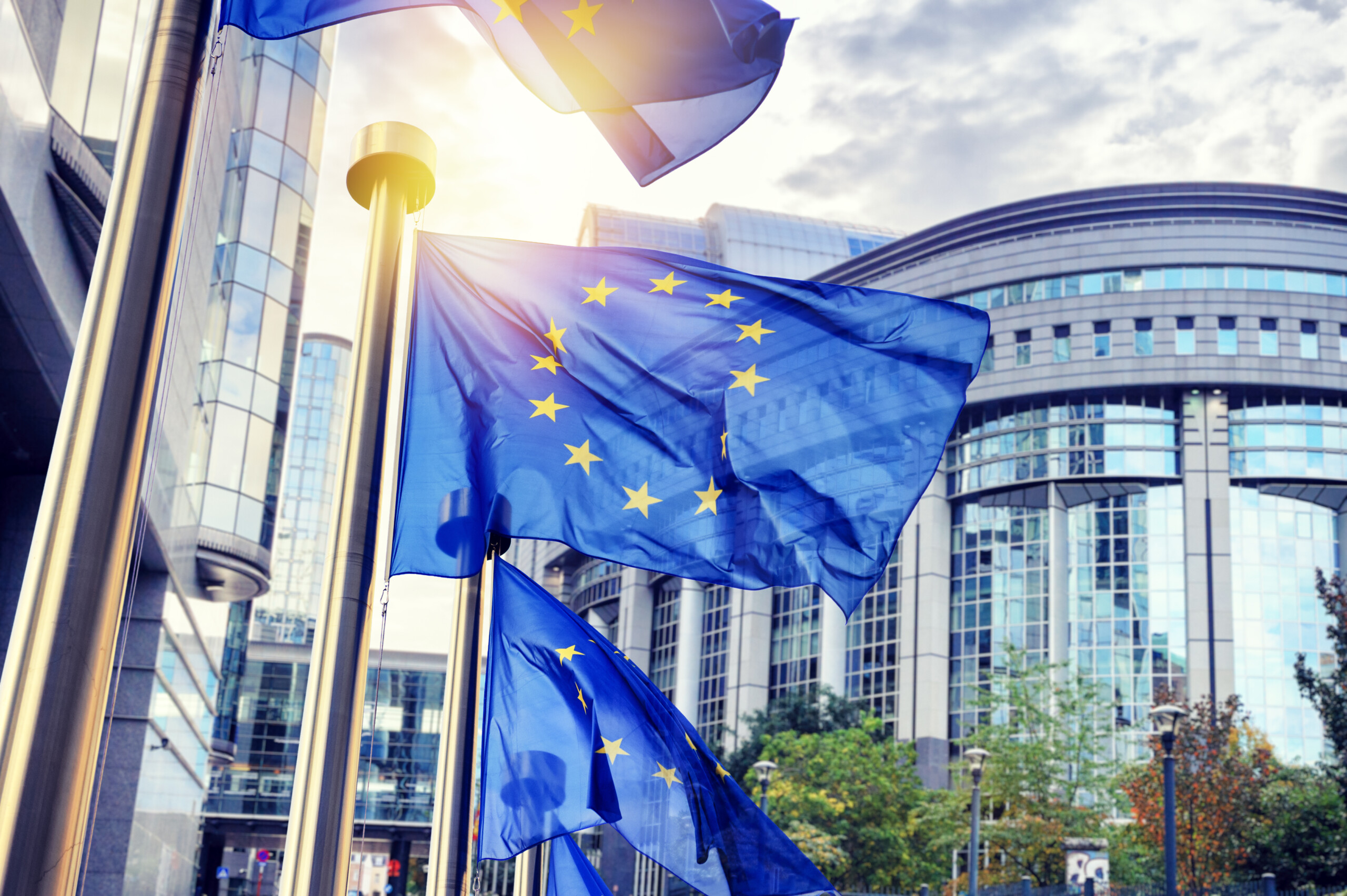
EU flags waving in front of European Parliament building. Brussels, Belgium
Industrial compostable products certified to the harmonised European standard EN 13432 support better waste management by:
- helping separate biowaste collection,
- diverting waste from landfills and incineration,
- preventing misthrows of conventional plastics into compost, and
- feeding valuable biomass back into industry or fertilizers.
With the new Packaging and Packaging Waste Regulation (PPWR) (EU 2025/40), the EU recognises that for certain packaging applications, compostability offers demonstrable environmental benefit. Under Article 9, across the EU from 12 February 2028 onwards, the following packaging types will be required to meet industrial compostability standards (with an additional home compostability requirement that may be introduced by Member States):
- sticky labels on fruit and vegetables
- permeable tea, coffee, or beverage bags
- soft single-serve units (tea, coffee, etc.) that are disposed together with the product
Beyond that, Article 9 allows the Commission to expand this mandatory list and lets member states require compostability for additional packaging types where infrastructure exists (e.g., non-permeable beverage units, (very) lightweight plastic carrier bags).
EUBP believes that additionally certain packaging formats are especially well suited for compostability — namely those that:
- are often contaminated with food or disposed with biowaste, and
- are difficult or uneconomical to recycle.
Examples include:
- lightweight or very lightweight plastic carrier bags (often reused as bin liners),
- compostable coffee pods / capsules (allowing grounds + packaging to be composted),
- short shelf-life fruit and vegetable packaging,
- food-soiled paper/plastic composite packaging (e.g. trays, wraps),
- cling film and bakery wraps,
- small condiment/sauce packs, and
- absorbent pads for meat, fish, or produce.
These formats are typically difficult to recycle and often end up contaminating compost or being incinerated. By enabling compostability, nutrients can be returned to soil, GHG emissions diverted, plastic contamination reduced, and loops in the circular economy closed. The industry is ready to scale up — the technology is already available. What we need now is smart, consistent regulation that recognizes this potential and supports the transition.
In conclusion, while prevention and reduction remain top priorities in the EU waste hierarchy, compostable plastics should not be seen merely as replacements for existing plastics. Rather, they offer new, more sustainable packaging and end-of-life options. This is why European Bioplastics urges Member States to include proven compostable applications — especially those listed above — when implementing the PPWR and shaping the future of circular packaging.
Find out more here